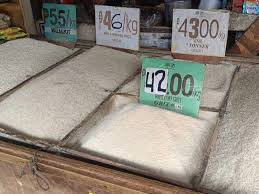Despite assurances by the Department of Agriculture (DA) that come harvest this March, rice prices would decline to be bolstered by imports, there is no way but up for rice prices in the coming weeks.
This is because the impact of drought from the worsening El Nino has affected many provinces where palay is produced and the unabated soaring prices in the world market would result in continuing rising farmgate prices for palay and milled rice.
Even agricultural lobbyist, Engr. Rosendo So, who heads the Samahang Industriya ng Agrikultura (SINAG), said high retail rice prices would persist as imported varieties (which are more expensive than local rice, therefore local traders have no option but to approximate their prices) dominate the local market.
Records from the Bureau of Plant Industry (BPI) – the agency that issues import permits and sanitary and phytosanitary clearance permits – showed that as of February 16, imported rice hit 569,286 MT (metric tons) or 44.28 percent more than the 394,553 MT imported in January-February 2023.
Most of the stocks came from Vietnam, with whom the country recently signed a long-term rice supply agreement, where palay price is at P21 per kilogram while the wholesale rice price is at P50.
In Vietnam, So said, retail rice prices are at P52 to P56 per kg.
Of the total imports as of February 16, more than half or 327,418.09 MT came from Vietnam, followed by Thailand with 154,234.38 MT and Pakistan with 60,638.3MT.
Since Thailand also ships rice to the Philippines, the price of 25 percent brokens is at $585 per MT plus logistics (freight and delivery cost) so it would add up to $620 per MT plus P49 per kg for landed cost.
All told, the price of Thai rice here is P53 to P54 when it reaches the market.
The DA estimated that P151 million, affecting 3,923 farmers with an output loss of 6,618 MT on 3,291 hectares of farmlands have been destroyed, according to the Daily Tribune report of February 8, 2024.
Rice incurred the biggest damage and losses, affecting 2,971 hectares, of which 2,719 hectares, or 91.52 percent, can still be recovered and 252 hectares, or 8.48 percent, are irrecoverable.
The rice volume loss weighs 6,079 MT, which amounts to P141.24 million in damage.
Iloilo remains the area to be most hit, registering a value loss of between P100 and P200 million.
Negros Occidental, on the other hand, suffered a value loss between P10 and P100 million, and Zamboanga del Norte suffered a loss of not over P1 million.
In addition to drought, the invasion of armyworms in Region 12 (SOCCSKSARGEN) particularly South Cotabato and Sultan Kudarat, is damaging rice and corn fields.
Most of the damage and losses in rice and corn are in the reproductive stage.
In Region 6, or Western Visayas, the regional situation reports that aside from the El Nino damages and losses on rice, pest infestation has also been observed, which is subject to validation.
The department said assessments in the affected areas are ongoing.
The DA has been providing vegetable seeds to the affected farmers and installing shallow tube wells to drought-affected areas. The affected farmers will also be endorsed to the Department of Social Welfare and Development and the Department of Labor and Employment to further secure additional assistance, including cash aid.
#WeTakeAStand #OpinYon #DA #RicePriceWatch
